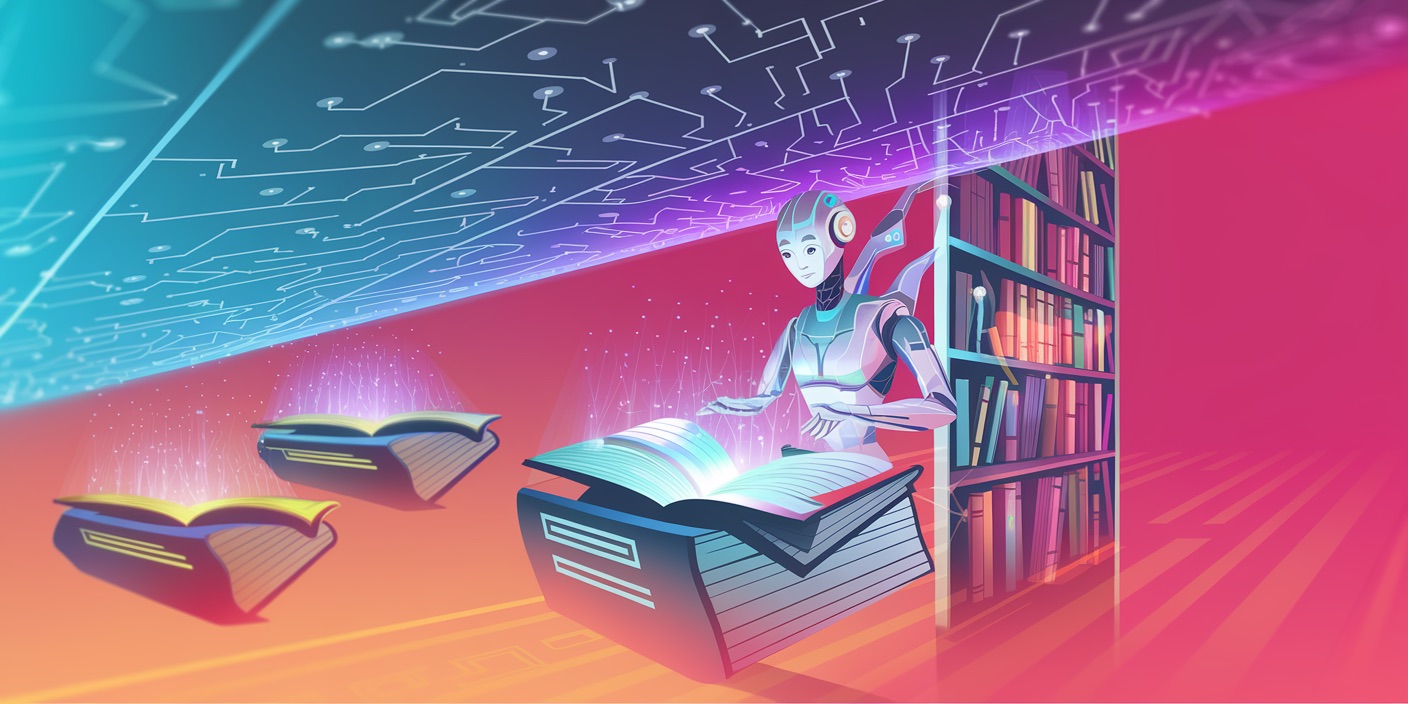Introduction: AI is Learning to Think Like Us
Imagine walking into a crowded library to find a single answer. The librarian knows not only where every book is but also which pages are relevant—and can connect the dots between unrelated sources to deliver exactly what you need. Now imagine this librarian thinks like a human: grasping meaning, not just words.
Welcome to the future of AI, where Graph RAG (Retrieval-Augmented Generation), In-Context Learning (ICL), and Meta’s Large Concept Model (LCM) are reshaping how machines learn, reason, and communicate. These systems are the foundation of a transformative leap—from predicting tokens to understanding concepts, and from isolated models to dynamic, multi-faceted agents.
This isn’t just about smarter machines—it’s about smarter collaborations between humans and AI. Let’s explore what makes this evolution groundbreaking and how it’s shaping the future.
From Pieces to Wholes: The Key Innovations
1. Graph RAG: The Knowledge Weaver
Graph RAG operates like a hyper-intelligent librarian. It combines knowledge graphs—web-like structures connecting facts and concepts—with advanced retrieval to augment AI’s understanding.
For example, in medicine, Graph RAG doesn’t just retrieve related documents on a disease; it connects symptoms, treatments, and the latest research into a meaningful, actionable answer. This isn’t retrieval for the sake of it—it’s reasoning at scale.
Why It Matters: Graph RAG transforms scattered data into cohesive, insightful answers, making it ideal for complex domains like healthcare, law, and research.
2. In-Context Learning (ICL): Teaching AI to Learn on the Fly
ICL is like showing someone examples of how a task is done and watching them pick it up instantly. It doesn’t require retraining or pre-programming—just context.
Think of it as giving a chef recipes for a few dishes and watching them create a menu from scratch. With long-context language models (LCLMs), AI can process millions of tokens, turning examples into understanding at scale.
ICL in Action:
•Old Paradigm: Carefully crafted, small examples were critical to performance.
•New Paradigm: With longer context windows, AI thrives on diverse, even noisy examples, making it adaptable to more scenarios with less fine-tuning.
Why It Matters: ICL eliminates the need for painstaking optimization. It’s fast, flexible, and scalable, ideal for domains with limited high-quality training data.
3. Meta’s Large Concept Model (LCM): Understanding at the Sentence Level
While traditional language models predict text word by word, LCM takes a more human-like approach. It processes entire sentences or paragraphs as concepts, capturing meaning rather than syntax.
Here’s an analogy: Traditional AI is like assembling a jigsaw puzzle piece by piece. LCM sees the whole picture instantly, making it faster and more coherent.
Key Features of LCM:
•Universal Understanding: Processes 200+ languages seamlessly using Sonar embeddings.
•Long-Form Generation: Avoids awkward or repetitive phrasing, excelling in extended, complex responses.
•Zero-Shot Language Understanding: Can interpret unfamiliar languages as long as they’re supported by Sonar.
Why It Matters: LCM mimics the way humans think—grasping overarching ideas before filling in details. It’s a game-changer for tasks requiring coherence and conceptual clarity.
The Interplay: How These Innovations Work Together
When Graph RAG’s knowledge retrieval, ICL’s dynamic learning, and LCM’s conceptual reasoning combine, they create a system capable of tackling humanity’s toughest challenges.
For example, consider a climate change query:
1.Graph RAG retrieves key scientific data and reports, connecting complex concepts like carbon cycles and renewable energy solutions.
2.ICL adapts to the user’s intent, providing examples or refining the query dynamically.
3.LCM synthesizes the input into a cohesive explanation or recommendation, maintaining coherence over long responses.
This trifecta isn’t just powerful—it’s revolutionary.
Surprising Insights: Redefining AI’s Potential
1. Simplicity Beats Complexity
Older models required meticulously crafted datasets. Now, both ICL and LCM thrive on diverse, even imperfect data. The lesson? Quantity and variety can outweigh perfection.
2. Synthetic Data as a Game-Changer
ICL makes it easy to augment small datasets with synthetic examples. For instance, generating more training data for rare medical conditions can significantly improve AI performance in healthcare.
3. Noise Tolerance
ICL and LCM are resilient to noisy data, meaning they can handle real-world messiness without breaking. This makes them invaluable in fields like journalism or law, where clean data isn’t always available.
Challenges and Opportunities
Challenges
•Ethical Concerns: Who controls how these systems are trained and used? Transparency and accountability must be built into their design.
•Data Inequality: Open-source tools help, but many communities still lack the resources to build or deploy these systems.
Opportunities
•Global Collaboration: These tools break down language and knowledge barriers, enabling cross-border problem-solving.
•Enhanced Decision-Making: With their ability to process, learn, and reason, these systems can support more informed choices in critical domains.
Call to Action: Be Part of the Future
The rise of Graph RAG, ICL, and LCM isn’t just a technical milestone—it’s a call to action for all of us to harness their potential responsibly.
1.Experiment and Learn: Dive into tools like Graph RAG or test Meta’s LCM architecture. These technologies are accessible and transformative.
2.Engage with Ethics: Join conversations about how these systems should be used, ensuring fairness and transparency.
3.Educate and Share: Help others understand these advancements by writing, teaching, or creating resources.
The Final Word: From Tokens to Concepts, and Beyond
AI is no longer just a tool—it’s becoming a collaborator, capable of understanding, reasoning, and generating ideas in ways we once thought impossible. With Graph RAG, ICL, and LCM, the future isn’t just about smarter machines—it’s about smarter partnerships between humans and AI.
Let’s embrace this new era with curiosity, responsibility, and ambition. The future of AI is being written today—how will you help shape it?
